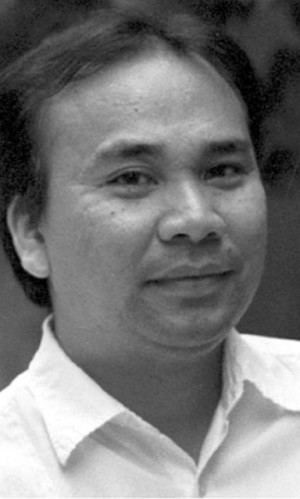Faith tourism and the fate of Mactan’s beaches

BERSALES
The recent pronouncement of Department of Tourism Secretary Wanda Tulfo-Teo to add faith tourism into the existing tourist attractions and resources of the country has moved forward fast. Already, a Director for Faith Tourism has been created by the Department of Tourism, in the person of Rebecca Villanueva-Labit, appointed just last January 25, 2018.
She led representatives of the four regions of the Visayas and Mindanao (Regions 6, 7, 8, 9) in Davao yesterday, in a workshop to develop a program for adding faith-based tourism attractions. This is the last cluster workshop, which began with the clusters in Luzon in February.
I joined the 10 Region VII representatives that concentrated on heritage churches, traditional Catholic practices and even food related to feasts and religious observances. Our main task was to look forward to the coming 500th anniversary of the Magellan expedition and the encounter with Humabon and, of course, Lapu-Lapu, among others.
In her introduction to the workshop, Dir. Villanueva-Labit set out the conceptual purpose of introducing the idea of faith tourism in four ways: 1) to create and enhance various/multi-interfaith/religious activities not limited to pilgrimages in the country; 2) to develop the niche religious market where travelers come for healing, prayer, devotion, viewing of faith/religious edifices and relics and for other purposes; 3) to contribute to the general awareness to create a holistic experience for pilgrims seeking higher meaning to feed the soul, body, mind and spirit; and 4) to complete an interesting tour packages based on faith that showcases the Philippines’ unique and diverse religious traditions and practices.
Father Brian Brigoli, head of the Cebu Archdiocesan Commission for the Cultural Heritage of the Church, proposed seven activities that Cebu could implement: events/festivals, structures (churches, convents ancillary facilities); museums; special devotion; shrines/monasteries, devotions; retreats/conferences/spiritual nourishment; other non-Catholic temples and churches; and other activities.
Among the events that are actually being developed now by the Cebu archdiocese is the Camino de Santiago de Compostela, which is a mere percentage of the actual 350-kilometer walking pilgrimage to the Cathedral of Santiago de Compostela in Spain but is, given the tropical heat of Cebu, will be a physically demanding sacrifice for the faithful participant.
Not necessarily passing through the national highway, this planned walking pilgrimage is currently being mulled in three possible routes: a walking pilgrimage just around the churches and chapels of the town of Compostela. A second possible route is a walking pilgrimage from Compostela to Sogod.
The third and the most physically demanding is a walking pilgrimage all the way from Compostela town to the other parish whose patron saint is also Santiago de Compostela, that of Badian, whose ministering priest is my good friend Fr. Marion Mejia.
Among the Catholic shrines we listed were without a doubt the Basilica Minore del Santo Niño, the National Shrine of the Virgen de Regla, the Msgr. Teofilo Camomot Shrine in Valladolid, Carcar and the OAD Chapel of Holy Relics in Tabor Hills, Talamban and the planned San Pedro Calungsod Shrine in Ginatilan.
Beyond the many possible Catholic sites that can be offered for faith tourists are added those of other religions like the Taoist Temple in Beverly Hills, the Chu Un Temple in Banawa as well as the Bradford Church on Jones Avenue.
With regard to heritage churches, those of southern Cebu start with the Metropolitan Cathedral and the Basilica Minore, down to the former Augustinian churches of El Pardo to Santander, numbering 12.
Then the diocesan churches that dot the southwestern side starting with Samboan up to Barili. Then there is also the northeastern and northwestern archdiocesan churches (some founded by Jesuits, taken over by the Recollects).
The final output of all our workshop plans will be submitted before the year ends for action by the Department of Tourism, which will then look at product development, the facilities like toilets and pit-stops in between sites and other challenges that need to be addressed.
* * *
As Boracay and Panglao are undergoing intense environmental scrutiny, one that should have been pursued a long time ago, long before this bung-ho president who doesn’t mince words, came to Malacañang, I wonder the fate of Mactan’s beaches.
Will they still wait for DENR Secretary Roy Cimatu come knocking on their doors, bulldozer in town, to begin removing all those illegal structures that have long erased the easement zone on a section of that island?
Years back, when I was still a young junior faculty of anthropology and sociology at the University of San Carlos, one of the research projects my colleagues and I pursued was the issue of access for local fisherfolks that was fast disappearing as more and more structure began mushrooming on the shorelines of Mactan.
Has the hour of reckoning for those that violated the law finally arrived?
Disclaimer: The comments uploaded on this site do not necessarily represent or reflect the views of management and owner of Cebudailynews. We reserve the right to exclude comments that we deem to be inconsistent with our editorial standards.
